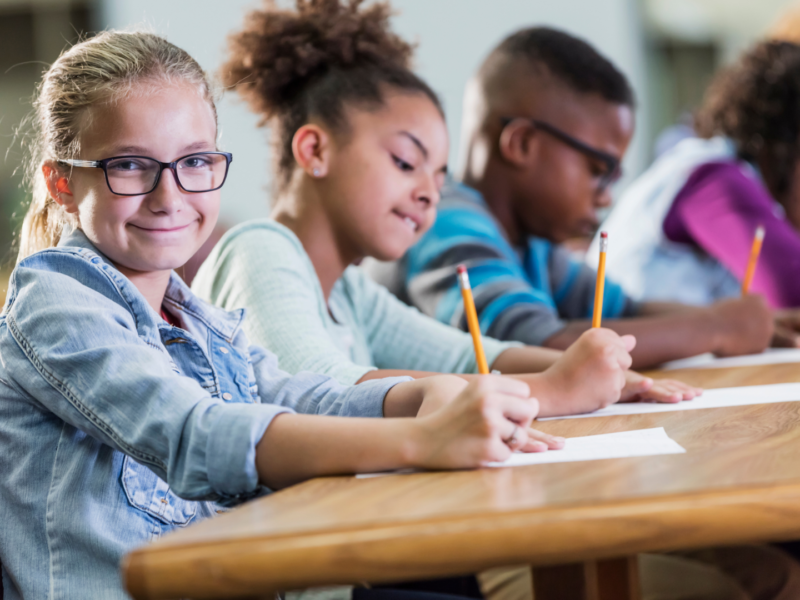Cerebrate Blog.
Explore strategies for skill development

Improve Working Memory in Elementary Classrooms Through Student Talk and Reflection
Posted In Discussion On May 16, 2025
If you’re looking for ways to improve working memory in your elementary classroom, one of the most powerful and accessible strategies is encouraging student talk. Executive function instruction isn’t just about teaching strategies—it’s about giving students the tools and confidence to think about their own thinking. When students discuss their experiences, reflect on their attention habits, and share memory strategies, they build a strong foundation in executive function learning and gain tools that help them thrive academically and socially.
Working memory is one of the eight core skills in the executive function system, and it plays a critical role in a student’s ability to follow directions, complete multi-step tasks, and retain new information long enough to apply it. When you improve working memory in young learners, you’re also supporting their student behavior, academic performance, and self-regulation. This blog offers teacher-guided discussion questions that are perfect for classrooms in grades 1–4 and are designed to spark meaningful conversations, support executive function development, and promote student engagement.
Try using the following discussion questions in small groups, morning meetings, or during one-on-one conferences. These questions are especially effective when paired with modeling and guided reflection. They are also a great fit for executive function lessons designed to improve working memory across subject areas.
-
Can you think of a time when you were able to focus really well? What was happening around you, and how did you stay focused?
This question helps students begin to recognize the conditions that support their attention. It also allows them to reflect on successful behaviors and identify what’s working for them. In the context of executive function instruction, this is a critical step toward student empowerment. When students can name what helps them stay focused, they’re more likely to repeat those strategies in the future—improving working memory and student confidence in the process.
-
How do you know when you’re starting to lose your attention? What signs do you notice?
Awareness is a key component of self-monitoring and working memory skills. When students can identify the early signs of distraction or frustration, they can use strategies to get back on track. This is vital and helps students become more independent learners. Responses to this question also give teachers insight into student learning needs, which supports more responsive instruction.
-
Why do you think it’s easier to remember something for a long time when you use it in a meaningful way? Can you share an example?
Here, students connect the dots between meaningful learning and memory. Talking about memory in the context of personal relevance helps improve working memory by promoting connections between new information and prior knowledge. This is a perfect opportunity to introduce executive functioning tools like mind mapping, drawing, or storytelling as ways to deepen memory and retention.
-
When you’re getting ready for school, how do you feel when you remember to complete all the steps you need? What helps you stay on track?
This question relates executive function skill development to real life, reinforcing the importance of teaching executive function skills that are useful beyond academics. Students can share routines or tools, such as checklists or songs, that help them stay on track. These strategies help improve working memory while building students’ social skills and independence. Students begin to see that remembering their tasks is something they can actively control.
-
Think about a time when you had to remember something important. How did you do it? Did you use any strategies, like repeating it to yourself?
This is a great wrap-up question because it gives students the chance to reflect on their personal executive function strategies. Whether they repeated something out loud, drew a picture, used a gesture, or wrote it down, this discussion highlights real-life tools that work. Teachers can use this moment to teach and reinforce student strategies that consistently improve working memory in and out of the classroom.
Why These Conversations Matter
Every time students reflect on how their minds work, they build skills that lead to long-term success. These discussions are not only opportunities to solve executive function challenges, but they also promote metacognition, strengthen classroom relationships, and help students feel seen and supported. When embedded into a broader executive function curriculum, this kind of talk lays the groundwork for future academic growth and personal confidence.
If you’re working with older students, you can access additional discussion questions here:
Ready to dive deeper into how our approach can support your teaching?
Click here to sign up for our newsletter and get more tips on how to improve working memory and other executive function skills.
Learn more about how our executive function curriculum supports educators and helps students achieve success across subjects and grade levels.
By giving students time to talk and reflect, you’re not only meeting their learning needs but also empowering them to take charge of their own growth. When teachers commit to executive function instruction, they create environments where students can truly thrive, both in school and beyond. Now is the time to help your students improve working memory, build lasting habits, and experience the success they deserve!

